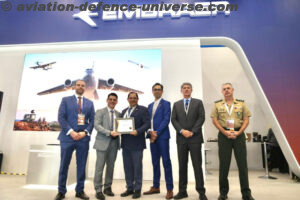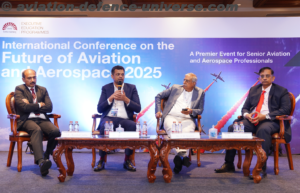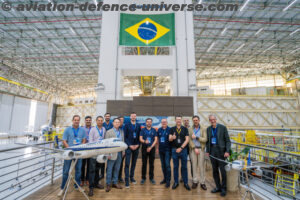Following are the initiatives of Department of Space during the year 2019:
Missions and Project Related Activities
- ISRO has successfully accomplished 13missionsincluding06 launch vehicle missions and07 satellite missions during the year 2019.
- 50 foreign satellites from 07countries were launched on commercial basis during this period.
- PSLV-C44 successfully launched Microsat-R and Kalamsat-V2 on January 24, 2019 from Sriharikota.
- On February 06, 2019GSAT 31 communication satellite was successfully launched from Kourou, French Guiana onboard Arianespace rocket.
- EMISAT was successfully launched onboard PSLV-C45 on April 01, 2019 from Sriharikota. The launch viewing gallery was inaugurated and opened to the public for viewing launches live from Sriharikota.
- On May 22, 2019 RISAT-2B radar imaging earth observation satellite was successfully launched onboard PSLV-C46 from Sriharikota.
- The successful launch of GSLV-MK III M1, India’s most powerful launch vehicle, was accomplished in July 22,2019. This launch vehicle is capable of launching 04 ton of satellites into Geosynchronous Transfer Orbit(GTO). The mission carried Chandrayaan-2 Orbiterspacecraft to its intended orbit.The instruments are continuously providing very useful science data.
- On November 27,2019 Cartosat-3, a third generation agile advanced satellite having high resolution imaging capabilitywas successfully launched by PSLV-C47 from Sriharikota.
- On December 11,2019, PSLV-C48 successfully launched RISAT-2BR1radar imaging earth observation satellite from Sriharikota.
- India’s first inter-planetary mission “Mars Orbiter Mission (MOM)” completed five years in Martian orbit in September 2019.
- Astrosat, the first Indian multi-wavelength space observatory, completed four years in orbit in Sept 2019. The data has been made open to public. Astrosat has more than 900 registered users from 24 countries.
- Global Standards body 3rd Generation Partnership Project (3GPP), which develops protocols for mobile telephony, has approved India’s regional navigation system NAVIC.
- Qualcomm Technologies Inc. in collaboration with the Indian Space Research Organization (ISRO), has developed & tested chipset platform across their portfolio which can support the Indian Regional Navigation satellite system, NavIC.
- The first-ever NavIC demonstration using the Snapdragon Mobile Platforms was showcased by Qualcomm during the India Mobile Congress at New Delhi on October 14-16, 2019
- A new center namely Human Space Flight Centre (HSFC) is created within ISRO/DOS with the responsibility to act as the lead center for Human Space Flight Program, Gaganyaan.The Gaganyaan project has the objective of demonstrating human space flight capability to Low Earth Orbit (LEO) with 3 crew members for 5-7 days in orbit and to safely recover them after the mission.
- Overall configuration of GSLV-MK III, crew escape system, crew module and service module for Gaganyaan have been finalized. An MoU is executed with Indian Air force for crew selection and training. Institute of Aerospace Medicine is identified for crew selection and screening criteria. This process is in progress.
- NewSpace India Limited (NSIL), Bengaluru, a wholly owned Government of India Company under Department of Space, was incorporated on 6th March 2019. The business activities of NSIL is mainly driven towards enabling Indian industries to productionise space systems and to exploit the commercial opportunities emanating from the Indian space programme.
- Commissioning of the Second Vehicle Assembly Building at Sriharikota to improve the frequency of launch.
- The notable development of the year was technology transfer of Li-ion to Indian industries.10 industries were selected for the transfer of the Li-ion cell technology from ISRO.
Other activities
- A year-long programme for commemorating the birth centenary of ISRO founder father Dr. Vikram A Sarabhai was inaugurated on August 12, 2019. The programme includes exhibitions, competitions to school children, journalism awards and speeches by eminent personalities. The programme will be conducted across 100 selected cities all over India.
- Space Technology Cells(STCs) were established at IIT Guwahati and IIT Delhito take up the space technology research and applications to newer heights.
- Space Technology Incubation Centres (S-TIC) were established at NIT, Trichyand NIT, Jalandharfor developing concepts related to Space Science and technology in line with the National policy of‘Start-up India’.
- Regional Academic Centre for Space(RAC-S) was established at NIT, Kurukshetra to develop Academia-Industry ecosystem for Space technology.
- Two batches of ISRO’s UNISPACE Nanosatellite Assembly &Training (UNNATI) programmewereorganized at Bengaluru. Around 62participants from more than 30countriesparticipatedin this programme.
- A special programme for School Children called “YuvaVIgyaniKAryakram (YUVIKA)” was organized, in tune with the Government’s vision “Jai Vigyan, Jai Anusandhan”. The Program is primarily aimed at imparting basic knowledge on Space Technology, Space Science and Space Applications.
- The Department of Land Resources in collaboration with ISRO has published fifth edition of Wasteland Atlas-2019.The new wastelands mapping exercise is carried out by ISRO using Indian Remote Sensing Satellites.
- Chandrayaan-2 data users meet, which is third in the series of lunar science meets, was held on October 22, 2019 at DOS Branch Secretariat, New Delhi. Lunar science meets are organised to maximise the science outcome from this mission and to increase the user base, particularly from non-ISRO institutions such as national institutes, academias and Research organisations.
- Satellite based mitigation support was effectively provided for mitigating the ill effects of various disasters faced by the country during the period such as floods, tropical cyclonic storms, and forest fire alerts.
- As many as 127 (out of 157) Space Technology projects are progressing as per schedule for the utilization of Space Technology space based tool and application in the Governance and Development.
- Data in the form of maps covering more than 1000 blocks were provided to Jal Shakti Abhiyan at local level, with specific information on ground water recharge potential areas.
- As part of enhanced outreach programme, ISRO launched ‘Samwad with Students’ wherein youngsters across India had an opportunity to interact with Chairman, ISRO.
































































































































